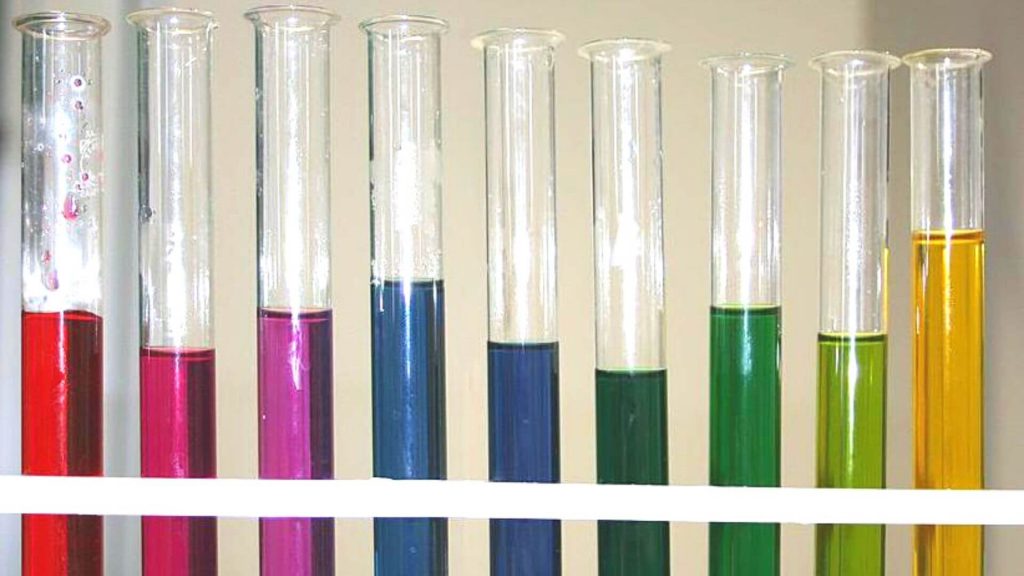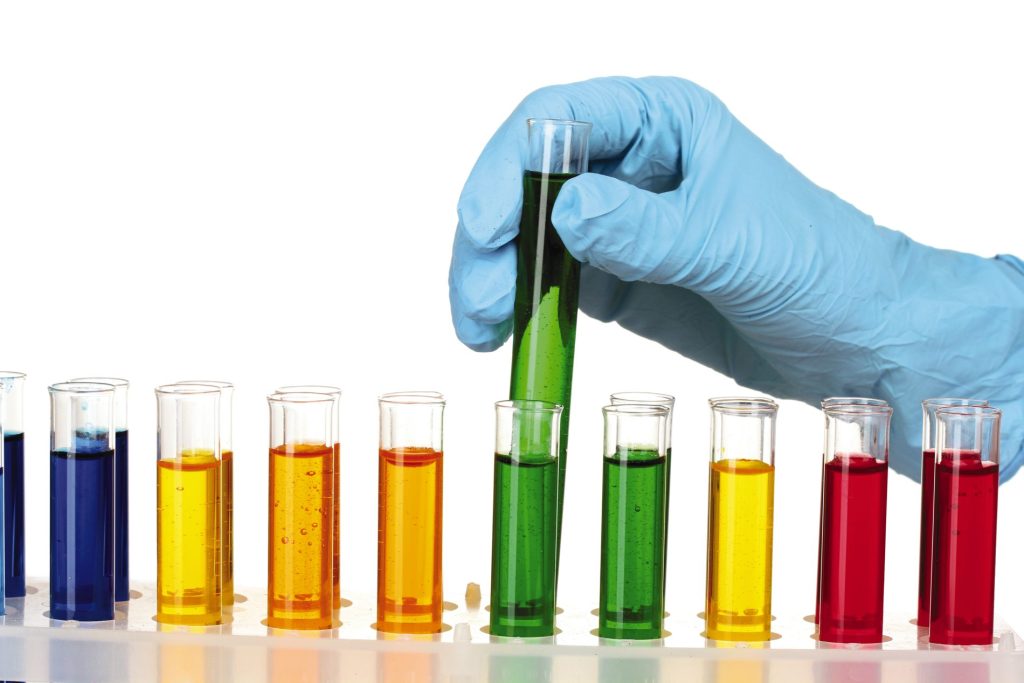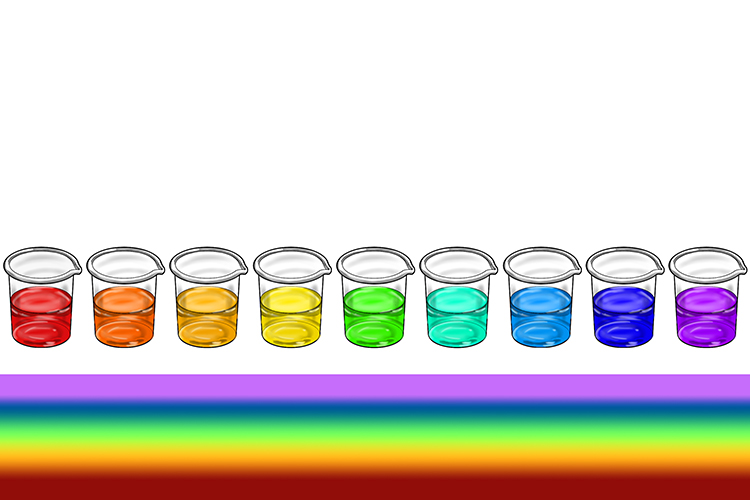Universal indicator is not used in titration because it lacks the precision required for accurate endpoint detection. It provides a broad range of colors over a wide pH scale, making it difficult to pinpoint the exact pH at the equivalence point. In titration, specific pH indicators with well-defined pH ranges are preferred to ensure precise and reliable results.
Here, you will see the reasons behind its infrequent use and emphasizes the importance of selecting the right indicator for successful experiments.
Limitations of Universal Indicator
The Universal indicator, designed to cover a wide pH range, comes with a set of limitations that limit its suitability for precise pH measurements and titration. It falls short in extremely acidic or basic solutions, offering imprecise estimates rather than fine pH discrimination. Its color changes aren’t linear, making it challenging to pinpoint exact pH values.
Moreover, During pH transitions, the indicator may display ambiguous colors, affecting accurate pH determination. Limited sensitivity hampers its ability to detect subtle pH changes, particularly in neutral or slightly acidic/basic solutions, impacting the precision of titrations and analytical work.
Furthermore, the presence of other substances can interfere with its accuracy, leading to misleading readings. It lacks specificity in differentiating between types of chemical reactions, which can be problematic in titration. In some reactions, it may even react with solution substances, yielding inaccurate results. These collective limitations make universal indicator less reliable for precise titration procedures.
Selection of Indicators in Titration

The choice of indicators in titration is crucial for obtaining accurate and reliable results. The selection of an appropriate indicator depends on the type of titration being conducted (e.g., acid-base, redox, complexometric), the pH range of the titration, the desired precision, and the specific nature of the analyte and titrant. Here are some guidelines for selecting indicators in different types of titrations:
Acid-Base Titrations:
- For strong acid-strong base titrations, phenolphthalein is often used. It changes color in the pH range of approximately 8 to 10, making it suitable for these titrations.
- Methyl orange is another option for strong acid-strong base titrations, with a pH range of about 3 to 4.
Redox Titrations:
- Potassium dichromate can be used as a self-indicator in redox titrations involving dichromate ions (Cr2O7^2-) as the oxidizing agent.
- Ferroin is commonly used as an indicator in redox titrations because it undergoes a color change from pale blue (reduced) to reddish-brown (oxidized).
Complexometric Titrations:
- Eriochrome black T (also known as eriochrome black T or EBT) is a popular indicator in complexometric titrations. It forms colored complexes with metal ions, allowing for endpoint detection.
- Calconcarboxylic acid is another indicator used in complexometric titrations, particularly for determining calcium ions.
Choice Based on pH Range:
- Select an indicator that has a pH transition range close to the expected pH change at the titration endpoint. This ensures that the indicator’s color change closely corresponds to the reaction’s completion.
- For titrations covering a wide pH range, consider using a pH meter to measure pH directly, or use a mixed indicator solution.
Desired Precision and Accuracy:
- If high precision and accuracy are required, choose an indicator with a sharp and well-defined color transition within a narrow pH range. This minimizes uncertainty in endpoint determination.
- In cases where rough estimates are acceptable, indicators with broader pH transition ranges may suffice.
Specificity to the Analyte:
- Ensure that it does not react with the analyte or interfere with the titration reaction. The indicator should specifically respond to changes in the titrant concentration or pH.
Safety and Environmental Considerations:
- Consider the safety and environmental impact of the indicator. Some indicators may be toxic or have disposal issues, so it’s important to use safe and eco-friendly options when available.
Experimental Considerations:
- Experiment with different indicators and titration conditions to determine the most suitable one for your specific titration. Conducting a preliminary trial run can help identify the best indicator.
Other Factors Influencing Indicator Choice
In the process of selecting an appropriate indicator for titration, a variety of factors must be taken into account. These factors include the visibility and clarity of the color change, as a distinct and easily recognizable transition is crucial for precise endpoint determination.
Moreover, the concentration of the analyte in the sample, the sample size, and the temperature sensitivity of the indicator must also be considered, particularly in micro-analytical titrations with small sample volumes.
Additionally, the solubility of the indicator in the titration medium, compatibility with other chemicals used, and the indicator’s stability over the course of the titration are essential factors. The color of the sample and the potential interference it may cause, along with the specific analyte groups involved in the titration, should guide indicator selection.
Further, Analyst experience, cost considerations, and indicator availability are practical considerations. Finally, safety and environmental concerns play a significant role in the decision-making process, as hazardous or environmentally unfriendly indicators should be avoided in favour of safer alternatives. Each of these factors plays a vital role in ensuring the success and reliability of titration experiments.
Why Universal Indicator is Inappropriate for Titrations: Quick Answer

However, it is not suitable for titration experiments for the following reasons:
1. Lack of Precision:
The universal indicator offers a rough idea of pH with gradual color changes, making it hard to pinpoint an exact pH value. In titrations, accuracy matters, and the gradual shift in color with a universal indicator can lead to less precise results.
2. Wide pH Range:
- Moreover, it covers an extensive pH range, from strongly acidic (red, pH < 3) to strongly alkaline (blue, pH > 11), with intermediate colors for the pH values in between.
- Also, often involve reactions with specific pH ranges for endpoint detection. The broad pH range can lead to uncertainty when trying to identify the precise pH at the endpoint.
FAQ’s
Why is universal indicator not accurate in titration?
Universal indicator is not accurate in titration because it changes color over a wide pH range, making it challenging to pinpoint the precise pH at the equivalence point, which is crucial in titration.
Why is phenolphthalein a better choice than universal indicator in titration?
Phenolphthalein is preferred in titration because it changes color sharply within a specific pH range, allowing for more accurate endpoint detection, making it easier to titrate to a specific pH value.
Why is methyl orange used instead of universal indicator in titration?
Methyl orange is used in titration because it exhibits a sharp color change at a specific pH, making it suitable for titration, especially for acids. Unlike universal indicator, it provides a clear endpoint.
Why can’t all titration reactions be followed with an indicator?
Some titration reactions, particularly involving weak acids and weak bases, cannot be followed using an indicator because the pH change near the equivalence point is too gradual to detect accurately.
What are the weaknesses of universal indicator in titration?
Universal indicator is not commonly used in titration because it gradually changes color for different pH levels, making it difficult to determine the precise pH of the solution being tested. Contaminated solutions can also affect the accuracy of the pH reading.
What are the limitations of universal indicator?
The limitations of universal indicator include providing only a rough approximate pH reading and lacking accuracy within a narrow pH range. It is a mixture of different indicators, resulting in a range of colors depending on the pH of the solution.
Why can’t phenolphthalein be used as an indicator for certain titrations?
Phenolphthalein is not suitable for strong acid-weak base titrations because it changes color between pH 8.1-10, while the pH for such titrations is slightly less than 7, causing no discernible color change.
Final Words
To sum up, the universal indicator is not ideal for titrations due to its imprecise and gradual color changes over a wide pH range. Titrations require specific pH indicators that provide clear and sharp color changes near the endpoint, ensuring accurate and dependable results.
Additionally, in the field of titrations, the selection of a suitable pH indicator is crucial, and the universal indicator’s limitations highlight the need for indicators designed for the specific pH range of the reaction under investigation.











